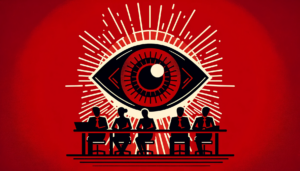Implementing the people and culture model to guarantee HR's strategic value
- 7 Min Read
David Liddle dives into the four pillars of his transformational culture model to help HR and culture leaders define their purpose, embed change, and create an outstanding employee experience
- Author: David Liddle
- Date published: Jul 10, 2023
- Categories

The evolution of the predominant HR model of the past towards a modern-day people and culture model is well underway. Leaders increasingly recognize the need to develop people-centered, values-driven cultures, including fairness, inclusion, compassion, transparency, and dialogue. But what does this type of people and culture model look like in practice?
What does HR need to do to embed new mindsets and ways of working and create the happy, healthy, and harmonious workplaces organizations need?
In my recent book ‘Transformational Culture’, I set out a People and Culture Model that people leaders can use to support the ongoing process of HR transformation. The model comprises four interconnected pillars, which help HR and culture professionals to define their purpose and objectives and embed change.
People and culture pillar 1: People
This first pillar encapsulates the work the people and culture function need to do to create a person-centered workplace, where values and purpose align with the needs of the business and the aspirations of the workplace.
Of course, people and culture practitioners cannot do this alone. But they need to play a pivotal role, working closely alongside leaders and stakeholders, defining the values that form the foundation for the way the organization goes about its business, and developing the behavioral frameworks that shape the daily actions and interactions that take place in the workplace.
In this scenario, the people and culture team becomes responsible for delivering the cultural flow within the organization and stands to become one of the most strategically important functions in the modern form.
At a front-line level, activities under the ‘People’ pillar might include:
- Integrating the purpose and values of the organization into the employee life cycle and the employee value proposition (EVP).
- Reviewing job design, recruitment, and onboarding processes, to hire and promote people on merit, and reduce the risk of unconscious bias and heuristics.
- Designing and delivering well-being, engagement, and inclusion programs and measuring their impact. Companies with inclusive cultures are six times more likely to be innovative and agile and eight times more likely to achieve better business outcomes.
- Delivering adequate training, coaching, and mentoring to line managers to equip them with the skills to manage people, and culture issues, and create the required climate in their teams and divisions.
People and culture pillar 2: Culture
Under the second pillar, is the work that people and culture professionals need to do to ensure the culture of the organization is fair, just, inclusive, sustainable, and high performing. As we have seen in the previous article, to achieve this, they need to adopt an impartial role and shift the widely held perception that HR, in the past, has been merely the mouthpiece and long arm of management.
A suitable place to start is with the establishment of a cross-functional transformational culture hub, bringing together key stakeholders from within the business. The purpose of the hub is to support leaders and managers in the drive to bring about culture change.
Key activities the hub might drive include:
- Using data and evidence to design and measure the culture, the climate within teams and divisions, and the impact of people within the organization. The culture can be measured across various axes: brand and reputation, Employee Experience (EX), Customer Experience (CX), well-being, engagement and inclusion, and business performance.
- View employees as the customers and users of HR processes. Seek and act on their feedback. In other words, people and culture teams need to listen to their customers and ensure they have a voice in the systems and processes they use.
- Developing the key skills (for themselves as practitioners, and amongst leaders and managers) that will underpin the culture change process. Positive psychology, emotional intelligence, nudge theory, principled negotiation, non-violent communication, and appreciative inquiry, to name just a few.
People and pillar 3: Strategy
Under this third pillar, People and Culture professionals use data and evidence to co-create a strategic narrative that enables individual, collective, and organizational brilliance.
We are living in tumultuous, fast-changing times, and organizations are having to navigate volatile social, political, and environmental pressures. A key role of the people and culture function is to ensure the organization is agile and that its people can adapt quickly to changing internal and external landscapes, such as digitalization, hybrid working, employee activism, and climate and economic emergencies.
Activities encapsulated within this third pillar include:
- Ensuring that people, values, and culture are key considerations during organizational change programs
- Creating and administering robust systems of accountability
- Communicating the imperative for the shift to a Transformational Culture and supporting line managers in its implementation.
People and culture pillar 4: Justice
Recent newspaper headlines are witness to the high levels of conflict and toxicity we are seeing in organizations. This comes at a high price.
Recent research from Acas estimates workplace conflict costs employers nearly £30 billion a year, including informal, formal, and legal processes, as well as the cost of sickness absences and resignations.
The industrial unrest we have seen over the past year is hurting the corporate pocket. Merriman estimate that the cost of strikes to the UK’s wider economy for the six months from June to December last year was £700 million.
HR’s reliance on outdated, formal policies for dealing with conflict has a large part to play in many of the problems in our workplaces.
The grievance and disciplinary, bullying and harassment, and performance management policies employed in many organizations are sowing the seeds of division and acting as the incubators of toxicity. These policies are concerned with apportioning blame and mitigating risks, and as a result are driving a culture of retribution, blame, shame, and punishment.
Transformative justice
Under this fourth ‘justice’ pillar, people and culture professionals can promote and sustain a culture of open dialogue, restorative justice, and learning (Transformative Justice). This model of Transformative Justice should include:
- Rejecting the damaging, retributive policies traditionally used to handle conflict, complaints, and concerns. Replace them with an over-arching Resolution Framework, which emphasizes early, dialogue-driven resolution of issues at an operational level, while remaining legally compliant. Burberry is just one company that is using this kind of framework to build trust and embed a people-centered, dialogue-driven approach to workplace issues. Six months on, the company is already seeing an increase in the number of workplace issues being resolved informally, in the moment.
- Acting swiftly to reduce industrial relations tensions between unions and management, and to become the enabler of an exciting new partnership between unions and management.
- Ensuring that all people policies and employee relations processes are restorative, rather than retributive, in nature, and that they focus on protecting relationships and delivering robust outcomes, which build trust and accountability
- Integrating learning from the application of workplace justice processes, to ensure they become the driver of continuous improvement
HR’s inflection point
HR stands at an inflection point. If it is unable to achieve at least some of the above, it may become increasingly marginalized, automated, and could become little more than an administrative function in many firms. Without embracing this evolution of its purpose and modus operandi, it risks becoming ever less transformational and ever more transactional.
Conversely, if HR can grasp this opportunity to transform itself, it could represent a watershed moment. With courage, energy, tenacity, and perseverance, this could become a moment where the new people and culture function becomes one of the most strategically essential functions in the modern organization.










